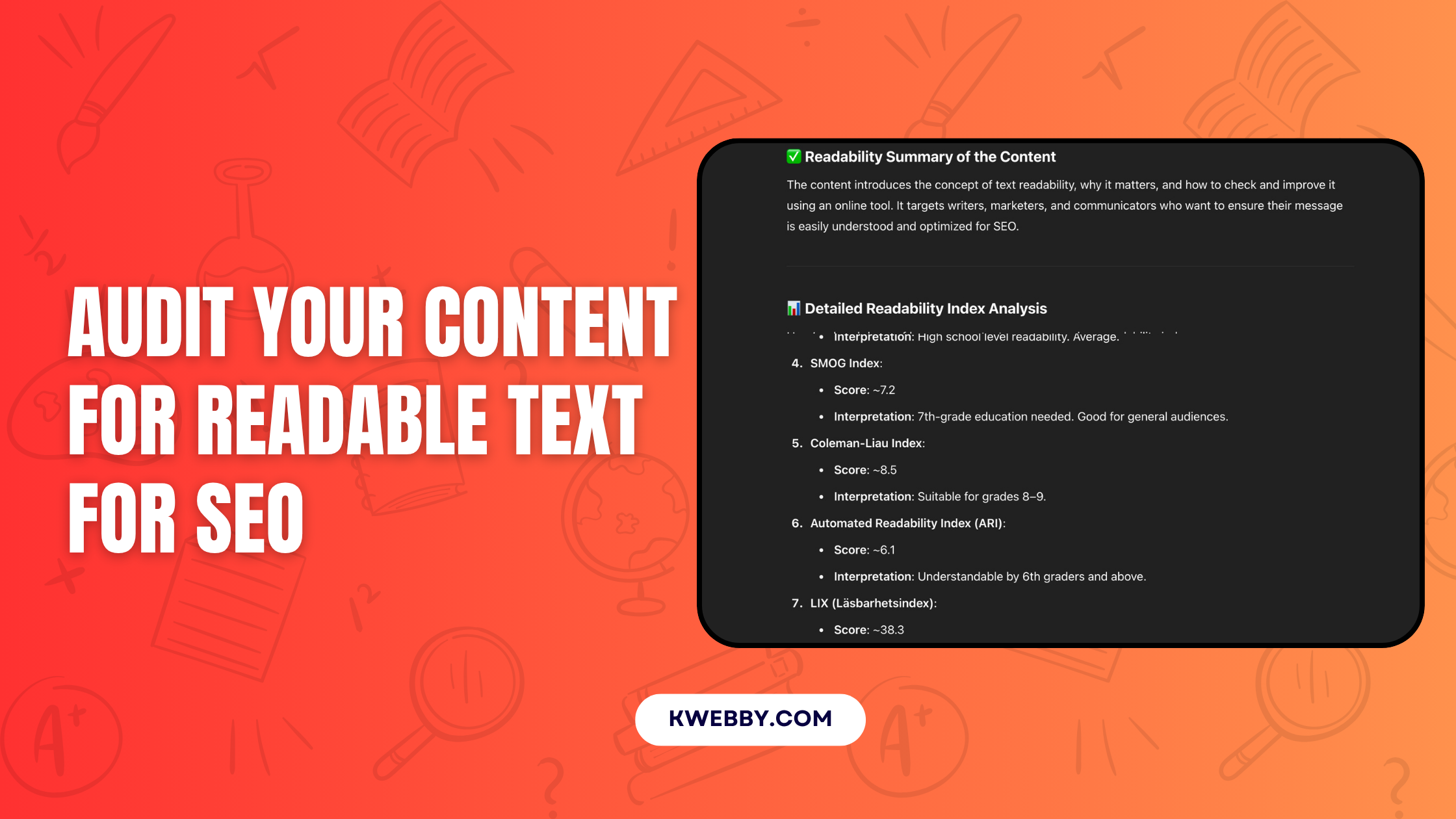
How Does the Plagiarism Checker Work? (Detailed Analysis)
Choose Your Language:
So, you’re curious about how plagiarism checkers work, huh?
Well, you’ve come to the right place!
In this article, we’re going to dive into the world of plagiarism detection and explore how these nifty tools can spot copied content with such accuracy.
Whether you’re a student wanting to ensure your paper is original or a content creator looking to protect your work, understanding how plagiarism checkers operate is crucial.
So, let’s get started and unravel the mystery behind these digital detectives, shall we?
1 How Does Plagiarism Checker Work?
A plagiarism checker works by utilizing advanced database software to compare your text with existing texts. Whether you’re a student submitting assignments or an individual checking your work, plagiarism checkers play a critical role in ensuring the originality of your content. Behind the scenes, these tools crawl the vast expanse of web content, indexing it and creating a database against which they can compare your text.
By conducting a comprehensive analysis of keywords, plagiarism checkers detect both exact matches and instances of paraphrasing plagiarism. On the user end, the checker provides valuable insights such as a plagiarism percentage, highlighted instances of plagiarism, and a list of sources.
Curious to see it in action?
Take a look at the interactive demonstration of the Kwebby Plagiarism Checker below.

Keywords play a crucial role in the operation of plagiarism checkers. When you submit your document to a plagiarism checker, the software scans the text and looks for specific keywords that are commonly associated with previous works. These keywords act as markers for potential instances of plagiarism. If the plagiarism checking software finds a high concentration of matching keywords, it raises a red flag.
In addition to keywords, plagiarism checkers also analyze phrases within your document. They compare the phrases you’ve used in submitted text with previously published works to identify any similarities. This allows the software to detect instances where you may have copied or paraphrased someone else’s work without proper attribution.
Content matching is another technique employed by popular plagiarism checkers now. This involves comparing your entire document with a vast database of existing publications. The software looks for sections of text that closely resemble content from other sources. By analyzing the content as a whole, the plagiarism checker can identify instances of copied or unoriginal material.
Fragment matching takes a more granular approach. Instead of comparing the entire document, it focuses on smaller portions or fragments of text. This method is particularly effective in uncovering cases of patchwork plagiarism, where individuals copy and paste content from multiple sources to create their work.
Different plagiarism checkers may prioritize advanced algorithms and utilize these search patterns in different ways. That’s why you might encounter variations in the results you get from different tools. While some tools rely heavily on content matching, others may prioritize keyword analysis or fragment matching. These variations in algorithms and databases used by different plagiarism checkers contribute to the different results they provide for the same document.
By employing these search patterns and analyzing your text, plagiarism checkers can effectively identify instances of similarity and potentially flagged content. It’s important to remember that the purpose of these tools is to promote academic integrity and ensure originality in your work, so using them can help you avoid unintentional plagiarism and maintain the credibility of your content.
Plagiarism checkers play a vital role in the writing process by helping writers ensure the originality and integrity of their work. But have you ever wondered how these tools actually work? Let’s delve into the mechanics behind plagiarism checkers to understand how they detect similarities and flag potential instances of plagiarism.
1.1 1. Keyword Matching
One method employed by plagiarism checkers is keyword analysis. Similar to a basic search engine, these tools focus on the location of keywords within your article. If your keywords appear in the same place as other published articles, the plagiarism-checking software will flag it as a potential issue.
However, this method has a weakness – it can be easily bypassed through paraphrasing. So, while keyword analysis is a useful starting point, it does not guarantee complete plagiarism-free content.
1.2 2. Phrase Matching
Phrase analysis builds upon keyword analysis by considering words within a phrase and their order. Certain phrases, such as transitional phrases like “in addition” or “in other words,” often need to maintain the same word order in various texts. Plagiarism checkers exclude these phrases from their recognition algorithms.
Instead, they establish a threshold, requiring a minimum number of words in the same order to flag it as potential plagiarism. This helps identify instances where writers might be using the same phrases without proper citation or attribution.
1.3 3. Content Matching
Content matching analysis takes plagiarism detection a step further by focusing on the overall structure, tone, and style of the writing. If the sentence structure, wording, and tone closely resemble published articles, the plagiarism checker raises a “red flag.” Although this type of analysis can sometimes result in false positives, it provides valuable insights into areas of academic writing that can be modified or rephrased to establish a higher level of uniqueness in your content.
1.4 4. Fragments Matching
The fragments matching analysis, also known as fingerprint analysis, is a powerful tool in the plagiarism checker toolkit. It searches for identical or highly similar fragments of text within your document that may match other published content. Even if you separate fragment order with a new paragraph or change word order, this analysis can still detect a match. It is particularly effective in identifying patchwork plagiarism, where small sections of someone else’s work are modified and inserted into your own.
By using these various analysis techniques, plagiarism checkers offer several benefits to writers:
Linking to the source of matching text to understand the similarity better.
Enhancing the speed of producing unique content.
Providing a similarity percentage with other articles to track potential plagiarism issues.
Assisting in verifying your paraphrasing abilities.
Helping you comply with regulatory and ethical guidelines.
Despite their many advantages, it’s important to note that plagiarism checkers are not infallible and can occasionally make mistakes. Therefore, it’s always wise to review and validate the flagged instances manually.
Now that we have explored how plagiarism checkers work, let’s move on to practical tips on avoiding and detecting plagiarism and generating compelling, unique content that captivates readers.
2 Where Plagiarism Detector Fails
Plagiarism checkers have made significant strides in detecting instances of plagiarism, but there are still some areas where they fall short. Let’s take a closer look at where plagiarism detection tools may struggle to identify plagiarized content.
2.1 Plagiarized ideas
One of the challenges that plagiarism checkers face is the detection of plagiarized ideas. If ideas have been thoroughly rephrased or translated, it becomes increasingly difficult for these tools to flag them as plagiarized. Similarly, plagiarism checkers may not be equipped to identify cases of non-text plagiarism, such as the unauthorized use of images. This highlights the limitations of current plagiarism detection technology when it comes to detecting certain types of plagiarism.
2.2 Plagiarized Translated Media
It’s important to note that plagiarism of translated texts, ideas, images, or any other non-text content is still a significant problem, and the consequences of such plagiarism are just as serious as with more easily identified cases. Plagiarism in any form undermines academic integrity and can have far-reaching consequences for individuals involved.
Additionally, while commercial plagiarism checkers are widely available, educational institutions often maintain their own internal databases of student work. These databases are typically not accessible to external parties and are used by institutions to check for plagiarism among their own students. This means that if you’re plagiarizing from your classmates, it’s more likely to be detected by your educational institution rather than a commercial plagiarism checker.
However, it’s worth mentioning that some educational institutions do share access to their internal academic databases, with other institutions. This collaboration aims to enhance the identification of plagiarism and other forms of academic dishonesty among students.
It’s essential to understand that self-plagiarism, which involves the submission of one’s own previously published work as new, and the act of submitting another individual’s work as your own both fall under the umbrella of plagiarism. The consequences of these actions remain the same as any other form of plagiarism.
If you’re concerned about accidental plagiarism from unpublished or private documents, such as a previously submitted paper or a friend’s thesis, there are specialized tools available. Kwebby’s Self-Plagiarism Checker, for example, allows you to submit documents that may not be available online but could still exist in your university’s internal database. This tool ensures that you can maintain academic integrity even when working with confidential or unpublished materials.
While plagiarism checkers continue to evolve and improve, it’s important to recognize their limitations. They may struggle to identify certain types of plagiarism, such as rephrased or translated ideas, as well as non-text plagiarism. Understanding these limitations empowers individuals to take proactive steps in upholding academic integrity and avoiding the severe consequences associated with plagiarism.
3 Plagiarism Resources
How Do Professors Check for Plagiarism? (5 Ways)
How to Check Code for Plagiarism (4 Methods)
7 Types of Plagiarism (with Examples & Tips to Avoid)
How to Check Plagiarism in Google Docs or Microsoft Word (4 Free Methods)
12 Best Plagiarism Checkers (All are Free!)
4 Conclusion
So, to sum it up, when it comes to plagiarism check, utilizing a reliable plagiarism checker tool is of utmost importance. It allows you to ensure the authenticity and originality of your content.
With the help of advanced technologies like AI content detectors, these tools can efficiently detect any instances of duplicate content, specifically in academic papers. By utilizing such tools, you can maintain academic integrity and produce high-quality, original work. So, don’t forget to run your content through a plagiarism checker before submitting it – your work and reputation depend on it!
You can also leverage AI content detector tools like Kwebby, Grammarly and Turnitin which detect your academic paper, original content and provides plagiarism reports in few clicks.




